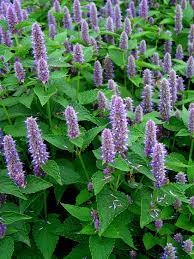Managing Cold Symptoms: Tips for Easing Discomfort and Speeding Recovery
Stay healthy and ward off the flu this season with our comprehensive guide. Learn about the symptoms, prevention strategies, and effective treatments to combat this contagious respiratory illness. Whether you’re looking to boost your immune system or alleviate flu symptoms, we’ve got you covered with practical advice and expert tips. As the seasons change, many of us find ourselves battling the common cold or flu. These illnesses can leave us feeling miserable and unable to function at our best. Please keep reading for details on the following:
Overview of colds and flu
What causes colds and flu
How to prevent colds and flu
What you can do to feel better if you do get sick.

Overview of colds and flu
Colds and flu, both respiratory illnesses, are caused by different viruses and have some key differences in their symptoms and severity. Colds are typically milder, usually come on gradually and rarely result in serious complications. On the other hand, flu symptoms tend to be more severe and sudden. Unlike colds, the flu can lead to complications such as pneumonia, especially in high-risk groups. While both illnesses are highly contagious and spread through respiratory droplets, the flu generally has a higher risk of causing severe illness and complications compared to the common cold.
Symptoms of colds and flu
The symptoms of both colds and flu can overlap, but there are some distinctions:
Colds:
- Runny or stuffy nose
- Sore throat
- Sneezing
- Cough
- Mild fever
- Headache
- Fatigue
- Generally milder symptoms
Flu:
- Fever (often high)
- Body chills
- Headache
- Body aches
- Fatigue (often severe)
- Sore throat
- Cough
- Runny or stuffy nose
- Sometimes nausea or vomiting
How are Colds and Flu Spread?
Preventing Colds and Flu
Preventing colds and flu involves a combination of good hygiene practices and healthy habits. Here are some effective prevention strategies:
- Frequent Handwashing: Wash your hands often with soap and water for at least 20 seconds, especially after coughing, sneezing, or touching surfaces in public places.
- Use Hand Sanitizer: When soap and water are not available, use alcohol-based hand sanitizers to disinfect your hands.
- Avoid Close Contact: Try to avoid close contact with people who are sick, and if you’re sick, stay home to prevent spreading the illness to others.
- Cover Your Mouth and Nose: Cover your mouth and nose with a tissue or your elbow when you cough or sneeze to prevent spreading germs.
- Avoid Touching Your Face: Avoid touching your eyes, nose, and mouth with unwashed hands, as this can introduce viruses into your body.
- Clean and Disinfect Surfaces: Regularly clean and disinfect frequently touched surfaces and objects, such as doorknobs, light switches, and electronics.
- Practice Good Respiratory Hygiene: If you’re sick, wear a mask to protect others and practice good respiratory hygiene by coughing or sneezing into a tissue or your elbow.
- Stay Healthy: Maintain a healthy lifestyle by getting enough sleep, staying physically active, managing stress, and eating a balanced diet rich in fruits, vegetables, and whole grains.
- Stay Hydrated: Drink plenty of fluids, such as water, herbal tea, and broth, to keep your body hydrated and support your immune system.
-
Get Vaccinated: Consider getting vaccinated against the flu each year to reduce your risk of infection and severe illness. One of the best ways to prevent the flu is to get a flu shot. Flu shots are available every year and are recommended for everyone over the age of six months. The flu shot works by exposing your body to a small amount of the flu virus, which helps your immune system build up antibodies to fight off the infection. While the flu shot isn’t 100% effective, it can significantly reduce your risk of getting sick.
Treating Colds and Flu
Treating colds and flu involves managing symptoms and supporting your body’s immune response. Here are some strategies to help you feel better:
- Stay Hydrated: Drink plenty of fluids like water, herbal tea, and broth to stay hydrated and help loosen congestion.
- Rest: Get plenty of rest to allow your body to recover and fight off the infection.
- Over-the-Counter Medications: Use over-the-counter medications such as pain relievers (e.g., acetaminophen or ibuprofen) to reduce fever and relieve body aches, and cough syrups or lozenges to soothe a sore throat and suppress cough.
- Nasal Decongestants: Consider using nasal decongestants to relieve nasal congestion and help you breathe more easily.
- Steam Inhalation: Inhaling steam from a bowl of hot water or a humidifier can help loosen mucus and relieve congestion.
- Gargling: Gargling with warm salt water can soothe a sore throat and reduce inflammation.
- Warm Compresses: Applying warm compresses to your forehead or sinuses can help relieve headache and sinus pressure.
- Essential Oils: Some essential oils, such as eucalyptus and peppermint, have decongestant properties and can help relieve respiratory symptoms when used in steam inhalation or diffusers.
- Herbal Remedies: Consider using herbal remedies like echinacea or elderberry syrup, which are believed to support the immune system and reduce the severity of cold and flu symptoms.
- Avoid Smoking and Alcohol: Avoid smoking and excessive alcohol consumption, as they can irritate your throat and worsen symptoms.
-
Seek Medical Attention: If your symptoms are severe, persist for more than a week, or worsen over time, seek medical attention. This is especially important if you have difficulty breathing, persistent chest pain, or other concerning symptoms.
Home Remedies for Colds and Flu


Home remedies can provide relief from cold and flu symptoms and support your body’s natural healing process. Here are some effective home remedies:
- Stay Hydrated: Drink plenty of fluids like water, herbal tea, coconut water, fresh juice, soup, fruits and vegetables, herbal tea and clear broth to stay hydrated and help thin mucus.
- Rest: Get plenty of rest to allow your body to recover and fight off the infection.
- Warm Salt Gargle: Gargling with warm salt water can soothe a sore throat and reduce inflammation. Mix about half a teaspoon of salt in a glass of warm water and gargle several times a day. Never swallow the water (the salt content is not suitable for swallowing).
- Steam Inhalation: Inhaling steam from a bowl of hot water or a humidifier can help loosen mucus and relieve congestion. You can add a few drops of essential oils like eucalyptus or peppermint for added relief.
- Honey: Honey has antimicrobial properties and can soothe a sore throat and suppress cough. Mix a teaspoon of honey in warm water or herbal tea and drink it several times a day.
- Chicken Soup: Chicken soup is not only comforting but also helps relieve congestion and inflammation. It can also keep you hydrated and provide essential nutrients.
- Garlic: Garlic has antiviral and immune-boosting properties. Incorporate raw or cooked garlic into your meals or take garlic supplements to support your immune system.
- Ginger: Ginger has anti-inflammatory and antiviral properties and can help relieve cold and flu symptoms. Drink ginger tea, chew on raw ginger slices, or add ginger to soups and stir-fries.
- Echinacea: Echinacea is an herb that may help boost the immune system and reduce the severity of cold and flu symptoms. Drink echinacea tea or take echinacea supplements as directed.
- Vitamin C: Vitamin C is known for its immune-boosting properties. Eat foods rich in vitamin C, such as oranges, strawberries, kiwi, Pomegranate and bell peppers, or take vitamin C supplements.
- Essential Oils: Essential oils like eucalyptus, peppermint, and tea tree oil can help relieve congestion and promote relaxation. Add a few drops of essential oils to a diffuser or inhale steam with essential oils added.
- Humidifier: Using a humidifier in your home can add moisture to the air and help relieve nasal congestion and dry throat.
- Rest and Relaxation: Allow your body to rest and recover by getting plenty of sleep and reducing stress.
- Increase Zinc Intake: Zinc supports the immune system and can be found in foods like oysters, beef, pork, beans, nuts, and whole grains.
- Maintain Healthy Nutrition: Eating a balanced diet rich in vitamins and minerals can support overall well-being and help your body fight off illness.
- Turmeric and Warm Milk: Turmeric has anti-inflammatory properties that can help soothe a sore throat. Adding turmeric to warm milk creates a comforting drink that may alleviate discomfort.
-
Spicy Foods: Cayenne pepper and other spicy foods can help clear blocked sinuses by causing the nose to run, facilitating the removal of mucus.
- Vapor Rub: Applying vapor rub to your chest and throat can help reduce coughing and open up airways, promoting better sleep at night.
-
Eucalyptus Bath: Adding eucalyptus oil to a warm bath can improve breathing by clearing nasal congestion and relieving chest tightness.
Hyssop-


Hyssop is an herbaceous plant that has been used for centuries for its medicinal and culinary properties. This hardy perennial herb is native to the Mediterranean region and is a member of the mint family. Its leaves and flowers have a strong, aromatic scent and are often used to flavor dishes and teas. In traditional medicine, hyssop has been used to treat respiratory issues, digestive problems, and skin conditions. It contains compounds that have anti-inflammatory, antimicrobial, and antioxidant properties, making it a valuable herb in natural medicine. Hyssop can be grown easily in a home garden, and its versatility in both cooking and medicine make it a worthwhile addition to any herb collection.
Hyssop can be used in several ways to help alleviate symptoms of respiratory issues. Here’s how to use it:
- Hyssop Tea: Use dried hyssop leaves and flowers to make tea. Steep a teaspoon of dried hyssop in a cup of boiling water for about 10 minutes, then strain. You can sweeten the tea with honey to reduce its bitter taste. Drink the tea to help soothe a sore throat, alleviate cough, and promote respiratory health.
- Steam Inhalation: Add a few drops of hyssop essential oil to a bowl of hot water. Cover your head with a towel and lean over the bowl, inhaling the steam deeply for several minutes. The aromatic steam can help clear congestion, ease breathing, and relieve chest tightness.
- Hyssop Tincture: Hyssop tincture can be diluted in water and taken orally to help relieve respiratory symptoms. Follow the dosage instructions provided on the tincture bottle or consult with a healthcare professional for guidance.
- Hyssop Poultice: Crush fresh hyssop leaves and flowers to make a poultice. Apply the poultice directly to the chest to help relieve congestion and promote respiratory comfort.
- Hyssop Oil Infusion: Infuse hyssop leaves and flowers in carrier oil, such as olive or coconut oil, to create a homemade chest rub. Massage the infused oil onto the chest and throat area to help alleviate cough and congestion.
Before using hyssop or any herbal remedy, it’s essential to consult with a healthcare professional, especially if you have underlying health conditions or are pregnant or breastfeeding.
Chamomile-


Chamomile is an herb that has been used for centuries for its various health benefits. The herb is known for its calming effects and is commonly used to promote relaxation and relieve stress. Chamomile also has anti-inflammatory properties that can help reduce inflammation and promote healing in the body. Additionally, chamomile has been shown to improve sleep quality, soothe digestive issues, and boost the immune system. This herb can be consumed in the form of tea, supplements, or essential oils, and is a great natural remedy for a variety of ailments. Overall, chamomile is a versatile herb with numerous health benefits that can be easily incorporated into a healthy lifestyle.
Here are some common ways to use chamomile:
- Chamomile Tea: Chamomile tea is a popular herbal infusion known for its calming effects. To make chamomile tea, steep dried chamomile flowers in hot water for about 5 to 10 minutes, then strain. You can enjoy chamomile tea plain or add honey or lemon for flavor.
- Topical Applications: Chamomile can be used topically to soothe skin irritations, such as minor cuts, burns, and insect bites. You can apply cooled chamomile tea directly to the affected area or use chamomile-infused oils or creams.
- Inhalation: Inhaling the steam from chamomile tea or chamomile essential oil can help relieve respiratory congestion and promote relaxation. Add a few drops of chamomile essential oil to hot water and inhale the steam while covering your head with a towel.
- Mouth Rinse: Chamomile mouth rinse can help soothe mouth and throat irritations and promote oral health. Pour boiling water over a head of chamomile flower heads. Cover the bowl and allow to soak for 15 minutes then strain, allow it to cool, and use it as a mouth rinse several times a day.
- Chamomile Baths: Adding chamomile to a warm bath can help relax muscles and promote overall relaxation. You can use chamomile tea bags or dried chamomile flowers in a muslin bag for easy cleanup.
-
Chamomile Compress: Steep chamomile tea, soak a clean cloth in the cooled tea, and apply it to the affected area as a warm compress to soothe muscle tension, menstrual cramps, or joint pain.
Horseradish–


Horseradish is a pungent and flavorful condiment that has been used for centuries in cuisine around the world. It is a root vegetable that belongs to the Brassicaceae family, which also includes other familiar vegetables like broccoli and cauliflower. Horseradish has a long history of medicinal use and is known for its antibacterial and anti-inflammatory properties. Its distinctive taste and aroma make it a popular ingredient in sandwiches, dips, and sauces. Horseradish is also a good source of vitamin C, dietary fiber, and potassium, making it a healthy addition to any diet. Whether you enjoy it as a garnish or a main ingredient, horseradish is a versatile and flavorful addition to any kitchen.
Here are some common ways to use horseradish:
-
- Horseradish Poultice: Grate fresh horseradish and apply it directly to the skin as a poultice to help alleviate congestion, sinus pressure, or joint pain. Be sure to use a cloth barrier between the horseradish and your skin to avoid irritation.
- Horseradish Tincture: Prepare a horseradish tincture by steeping grated horseradish root in alcohol (such as vodka or brandy) for several weeks. Strain the mixture and use the tincture in small doses as a natural remedy for respiratory issues or digestive discomfort.
- Horseradish Tea: Steep grated horseradish root in hot water to make a pungent tea that can help clear nasal passages and relieve congestion. Add honey or lemon for flavor, if desired.
- Horseradish Gargle: Grate some fresh horseradish. Mix a tablespoon of horseradish with a teaspoon of honey and water. Gargle as necessary.
WHEN TO SEEK URGENT MEDICAL CARE
Here are some situations that warrant immediate medical attention:
- High Fever: Seek medical attention if you or a loved one has a fever over 100.4 degrees Fahrenheit (38 degrees Celsius), particularly if it’s accompanied by other concerning symptoms.
- Difficulty Breathing: If you’re experiencing severe difficulty breathing, shortness of breath, or chest pain, seek medical help immediately, as these could be signs of a severe respiratory infection or other serious condition.
- Persistent Chest Pain: Chest pain or pressure can indicate a heart-related issue or other serious condition, especially if it’s persistent or accompanied by other symptoms like shortness of breath or dizziness.
- Chills and Sweating: If you’re experiencing severe chills or sweating, especially if it’s accompanied by other symptoms like fever, body aches, or confusion, seek medical attention promptly.
- Strange Colored Mucus: If you notice unusual colors in your mucus, such as green, yellow, or bloody mucus, it could indicate a bacterial infection or other underlying issue that requires medical evaluation.
- Worsening Symptoms: If your cold or flu symptoms are getting worse instead of better, or if you develop new or concerning symptoms, it’s essential to seek medical advice.
- Flu Lasts Over 2 Weeks: While cold and flu symptoms typically improve within a week or two, if your symptoms persist for more than two weeks, it’s advisable to consult with a healthcare professional.
- New Symptoms Develop: If you develop new symptoms that are concerning or unusual, such as confusion, severe headache, or rash, seek medical attention promptly.
Remember that these are general guidelines, and it’s essential to use your judgment and seek medical advice if you’re unsure or concerned about your symptoms. If you or someone you know is experiencing a medical emergency, such as difficulty breathing or chest pain, call emergency services immediately.
Disclaimer: The information provided in this content is for general informational purposes only. It is not intended as medical or healthcare advice, diagnosis, or treatment. Always seek the advice of a qualified healthcare professional with any questions you may have regarding a medical condition or healthcare decisions.

